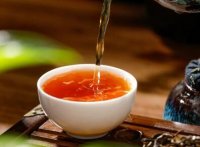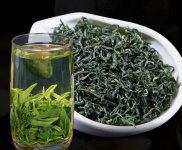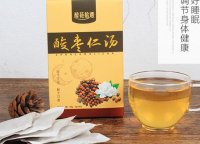一、树脂是非遗吗?
是。
以传统手工艺的制作工艺来制作树脂工艺品属于非遗,普通的树脂手工艺品不是非遗。
树脂工艺品是以树脂为主要原料,通过模具浇注成型,制成各种造型美观形象逼真的人物、动物、昆鸟、山水等,并可制成各种仿真效果。如:仿铜、仿金、仿银、仿水晶、仿玛瑙、仿大理石、仿汉白玉、仿木等树脂工艺品。
二、徽墨是非遗吗?
徽墨是中国传统文化中的艺术品,因其独特的制作工艺和艺术表现形式,被列入了国家级非物质文化遗产名录。因此,徽墨是非遗。非遗指的是传承时间长、具有代表性、有独特技艺或文化内涵的非物质文化遗产。徽墨的制作过程是非常繁琐和精细的,需要掌握特殊的技艺和配方,其被传承和保护的历史也非常悠久。因此,徽墨不仅是中华传统文化的瑰宝,也是非遗保护工作中的一部分。
三、变脸是非遗吗?
新时代的发展,人们的交流日渐方便,变脸文化迅速传播开来,不仅仅是在巴蜀之地,在国内的其他地方上的人们也通过手机、电脑认识到了川剧,认识到了变脸。在2006年,川剧艺术被列为国家级第一批非物质文化遗产,成功入选非遗,使变脸传统艺术文化属性得以提高。人们不再简单把它当成一种山野杂技。
四、笛子是非遗吗?
笛子本身没有列入。
但有个别传统制作笛子的名地如:玉屏笛箫。被列入。
笛子肯定是物质文化遗产,但是不是国家非物质文化遗产,目前还没有作为单独项目公布。
竹笛,汉族乐器名。
笛子是中国广为流传的吹奏乐器,
因为是用天然竹材制成,
所以也称为"竹笛"。
竹笛流传地域广大,品种繁多。
使用最普遍的有曲笛、梆笛和定调笛。
还有玉屏笛、七孔笛、短笛和顺笛等。
五、拐枣是非遗吗?
不是的,拐枣不是非遗。而拐枣酒酿造技艺为非遗项目。
拐枣,学名枳犋。别名:万寿果、俅江枳椇、鸡爪连、金钩梨、拐枣儿、臭杞子、鸡爪子、龙爪等,皆因型而得名。果柄含多量葡萄糖和苹果酸钾,经霜后甜,可生食或酿酒,俗称“拐角”;果实形态似万字符“卍”,故称其树为万寿果树。花期5-7月,果期8-10月。
六、舞狮是非遗吗?
舞狮当然是非遗。
经由过程举办文明节将该民风完整体系地保文明旅游工业在乃至天下的影响力。政府应尽快着手将“舞狮”列入天下非物质文明遗产的报告工作,拨出专项资金,同时,经由过程报告更好地挽救性保护,并藉此更好地宣传、推广黄陂的荆楚文明,武汉市人大代表曾庆喜倡议,黄陂区政府应对这一传统文明民风引起应有的正视,组织有关部门对其特有的文明现象进行深入挖掘,使得这项民风流动得到相干部门正式认可。否则这项民风将面临衰落,甚至可能失传。
七、龙灯是非遗吗?
是非物质文化遗产, 舞龙灯是一种非常古老的传统民俗活动 习俗遍布世界各地 是中华文化的一个标志。“艳说年年五谷登,龙蟠九节彩云蒸,瞥如声涌惊涛沸,火树千条滚龙灯”
八、剪纸是非遗吗?
剪纸是国家非物质文化遗产。
2006年5月20日,剪纸艺术遗产经国务院批准列入第一批国家级非物质文化遗产名录。2009年9月28日至10月2日举行的联合国教科文组织保护非物质文化遗产政府间委员会第四次会议上,中国申报的中国剪纸项目入选“人类非物质文化遗产代表作名录” 。
中国剪纸是一种用剪刀或刻刀在纸上剪刻花纹,用于装点生活或配合其他民俗活动的民间艺术。在中国,剪纸具有广泛的群众基础,交融于各族人民的社会生活,是各种民俗活动的重要组成部分。其传承赓续的视觉形象和造型格式,蕴涵了丰富的文化历史信息。
九、竹叶青是非遗吗
竹叶青是非遗吗?这个问题一直困扰着许多人。竹叶青作为中国传统的一种茶叶制作工艺,在很多地方都有着悠久的历史和深厚的文化底蕴。那么,竹叶青是否被列为中国的非物质文化遗产呢?本文将围绕这个问题展开探讨。
什么是竹叶青?
竹叶青,又称“竹叶茶”,是一种特殊的茶叶品种。它的制作过程非常独特,需要经过采摘、晒青、炒青等多道工序。与一般的茶叶相比,竹叶青的外形更多采用竹叶的形态,绿中透青,清香幽雅。
竹叶青的历史
竹叶青的历史可以追溯到唐代,起源于福建。当时,福建地区的茶农发现了一种特殊的茶叶制作方法,将鲜嫩的茶叶包裹在竹叶中进行炒制,制成的茶叶绿中透青,散发着清新的香气。经过千百年的传承和发展,竹叶青逐渐成为福建地区非常有特色的一种茶叶。
竹叶青的制作工艺
竹叶青的制作工艺非常复杂,需要经过多道工序才能完成。首先,茶叶要被精心采摘,保证茶叶的鲜嫩程度。然后,采摘下来的茶叶要进行晾青,让它逐渐变为青绿色,保持竹叶青特有的外形。接下来,茶叶要经过炒青、搓揉、杀青等工序,使其内外形态更加匀整。最后,经过精心的干燥和筛选,竹叶青就制作完成了。
竹叶青的特点
竹叶青作为一种茶叶,具有独特的香气和口感。首先,竹叶青的外形独特,绿中透青,形状如竹叶般修长,给人一种清新的感觉。其次,竹叶青的香气幽雅,带有淡淡的草木香味,清新怡人。最重要的是,竹叶青的口感鲜爽、回甘,喝起来非常的舒适。
竹叶青的非遗认定
关于竹叶青是否被列为中国的非物质文化遗产,目前尚未有明确的官方认定。但是,竹叶青作为中国传统的一种茶叶制作工艺,无论是其历史的悠久性还是对茶叶文化的传承都具有重要的意义。
在福建地区,竹叶青是非常重要的当地特产之一,被广大茶农和茶叶爱好者所喜爱。虽然可能还没有获得国家级的非物质文化遗产认定,但竹叶青无疑是中国茶文化中不可或缺的一部分。
保护和传承竹叶青
鉴于竹叶青作为传统茶叶制作工艺的重要性,保护和传承竹叶青的工作显得尤为重要。首先,政府和相关部门应该加强对竹叶青的保护和宣传,提高人们对其的认知度和重视程度。其次,加强竹叶青制作工艺的传承培训,培养更多的茶叶制作人才,确保竹叶青制作工艺的传承。
结语
竹叶青作为中国传统的一种茶叶制作工艺,虽然尚未被列为非物质文化遗产,但它在福建地区有着重要的地位和作用。它的历史渊源悠久,制作工艺独特,口感香醇。保护和传承竹叶青的工作是我们共同的责任,希望能够让更多人了解、喜爱和传承这种独特的茶叶。
Here's the same content in English: htmlIs bamboo leaf green tea considered an intangible cultural heritage? This question has been bothering many people. As a traditional tea-making technique in China, bamboo leaf green tea has a long history and profound cultural heritage in many regions. So, is bamboo leaf green tea recognized as an intangible cultural heritage in China? This article will explore this question in depth.
What is Bamboo Leaf Green Tea?
Bamboo leaf green tea, also known as "bamboo leaf tea," is a special type of tea. Its production process is quite unique, involving multiple steps such as picking, sun-drying, and pan-frying. Compared to regular tea leaves, bamboo leaf green tea takes on the shape of bamboo leaves, with a greenish hue and a delicate fragrance.
History of Bamboo Leaf Green Tea
The history of bamboo leaf green tea can be traced back to the Tang Dynasty and originated in Fujian. At that time, tea farmers in Fujian discovered a special tea-making method in which fresh tea leaves were wrapped in bamboo leaves and pan-fried. The resulting tea leaves had a greenish hue and exuded a fresh aroma. Over thousands of years, bamboo leaf green tea has become a unique and distinctive tea in Fujian.
Production Process of Bamboo Leaf Green Tea
The production process of bamboo leaf green tea is intricate and requires several steps to complete. Firstly, the tea leaves need to be carefully picked, ensuring their freshness. Then, the harvested tea leaves are dried until they turn green, maintaining the distinctive appearance of bamboo leaves. Next, the tea leaves undergo processes such as pan-frying, rolling, and fixation to achieve a more uniform shape. Finally, after meticulous drying and selection, the bamboo leaf green tea is ready for consumption.
Characteristics of Bamboo Leaf Green Tea
As a type of tea, bamboo leaf green tea possesses unique fragrance and taste characteristics. Firstly, its distinctive appearance resembles long and slender bamboo leaves, giving a sense of freshness. Secondly, bamboo leaf green tea has an elegant aroma with a hint of grassy notes, offering a refreshing and pleasant experience. Most importantly, it has a fresh and crisp taste with a lingering sweetness, providing a delightful drinking experience.
Recognition of Bamboo Leaf Green Tea as Intangible Cultural Heritage
Currently, there is no official recognition of bamboo leaf green tea as an intangible cultural heritage in China. However, as a traditional tea-making technique with a long history and cultural significance, bamboo leaf green tea is of great importance in terms of heritage and the preservation of tea culture.
In Fujian, bamboo leaf green tea is considered a significant local specialty, beloved by tea farmers and enthusiasts alike. While it may not have obtained national-level recognition as an intangible cultural heritage, bamboo leaf green tea undoubtedly plays an indispensable role in Chinese tea culture.
Protection and Inheritance of Bamboo Leaf Green Tea
Given the importance of bamboo leaf green tea as a traditional tea-making technique, the protection and inheritance of bamboo leaf green tea are crucial. Firstly, the government and relevant organizations should strengthen the protection and promotion of bamboo leaf green tea, increasing public awareness and recognition. Secondly, efforts should be made to enhance the inheritance and training of bamboo leaf green tea production techniques, cultivating more tea-making talents to ensure the preservation of this unique craft.
Conclusion
Although bamboo leaf green tea has not been officially recognized as an intangible cultural heritage, it holds an important position in Fujian as a traditional tea-making technique. With its long history, unique production process, and delightful taste, bamboo leaf green tea deserves our collective efforts in its protection, promotion, and inheritance. Let us continue to learn, appreciate, and pass down this extraordinary tea to more people.
十、什么是非遗?
非遗文化全称是:非物质文化遗产。
该名词是指各种以非物质形态而存在的并且与人们生活息息相关、世世代代相传承的传统文化。包括口头传统习语、风俗表演、民俗活动、节庆礼仪、与人文地理和自然常规有关的传统知识和实践、各民族的传统手工技艺等等这些都是以传统文化的形式表现出来的文化空间。


- 相关评论
- 我要评论
-
 190
190 2024-01-14 17:16
2024-01-14 17:16

